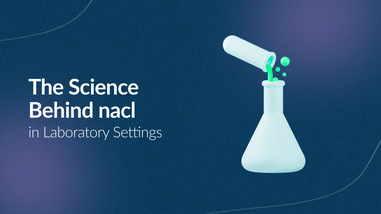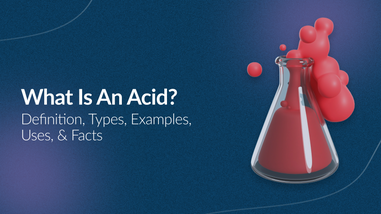- No products in the cart.
What Is Methanol?
One of the most common and most important laboratory solvents used in analytical labs is methanol. Not only for use in the laboratory, this versatile compound that is a key component in many everyday items and important chemical reactions. Chemically, methanol is an alcohol compound arranged as a methyl group.
Methanol's Chemical Properties: Solubility, Molar Mass and Molecular Density
Methanol is colorless and volatile, with a molar mass of 32.04 g/mol and a molecular density of 0.79 g/cm3. It is soluble in water with a boiling point of 148.46°F (64.70°C). The solubility, boiling point, and low freezing point play a big part of why it is so useful in so many applications.
Caution
Use caution when handling methanol as it is flammable and toxic if ingested or comes into direct contact with your skin. Even if a small amount is ingested, methanol poisoning can occur causing blindness, dizziness or even death. It depresses the central nervous system so seek medical help immediately for assistance.

What is Methanol Used For?
Methanol is used in a variety of chemical reactions, common items and innovative technologies like:
1. Formaldehyde: Methanol transforms easily into formaldehyde which is a massively used commercial product. It makes up kitchen counters, furniture, and interior moldings in vehicles. It is also a great preservative used in medicine and personal care items.
2. Biofuel: Instead of our current petroleum-based fuels, methanol can be used as a renewable fuel source. It is cheaper, has a reduced flammability risk, and is more easily acquired than gasoline. It does have lower energy density but it is still used as a fuel in racecars throughout the world. It can even be a substitute for diesel fuel when combined with potassium hydroxide.
3. Windshield Washer Fluid: Is perfect for deicing your windows because alcohols have a much lower freezing point than water. The ice combines with the alcohol, lowering the freezing point and thus causing the ice to melt.
4. Wastewater Denitrification: This is an important process because it prevents the formation of harmful, toxic algal blooms that pollute our waters. Algal blooms are generated by bacteria that proliferate in the presence of nitrate. By adding methanol to a wastewater system, anerobic bacteria activity is increased. That bacteria can break down the nitrate in the water and allow it to be released into the air as nitrogen. This process is becoming more common in wastewater treatment systems throughout the country.
5. Fuel Cells: Methanol acts as the fuel in fuel cells as it can store a large amount of energy while taking only a small amount of space. These cells often exist in small devices like laptops and phones.
6. DME: Methanol can be converted to dimethyl ether, which is commonly used as an aerosol propellant. It also has characteristics that would make it a good alternative to fuel for a diesel engine.
7. Acetyl Resin: This makes your strongest, most heat resistant and durable thermoplastic. It is easy to color, with low friction and it resists wear and tear. This makes it perfect for high intensity mechanical operations for industries like automotive, technology and healthcare.
8. Camping Fuel: Many outdoor enthusiasts use methanol to fuel their camping stoves. This is because only a small volume is required to fuel the stove and it burns easily, making it a popular option for camping excursions.
9. Acetic Acid: Methanol is a component of acetic acid which is used for pickling in the food industry, household cleaners, and as an antiseptic in medical procedures.
10. Laboratory Solvent: It is most commonly used as a solvent for HPLC analysis or UV/VIS spectroscopy. It also makes a great drying agent and solvent for making laboratory standards for instrument analysis. In gel electrophoresis it can even act as a destaining agent.
Where Can You Purchase Methanol?
Methanol is readily available for purchase by laboratory equipment suppliers like Lab Pro. It comes in various sized containers to suit your individual purposes. You can purchase it in an HPLC grade, which is a high-quality solvent grade for mobilizing your standards safely in an HPLC, or cleanroom grade methanol which is the highest quality grade to use in a cleanroom environment, and even a technical grade.
Conclusion
Methanol derivatives are all around you. They are in your home, your car, hospitals, and in numerous products lining the shelves at your nearest store. This versatile chemical has a strong future as an alternative fuel as it undergoes further research and testing. If you are needing methanol in one of your processes, reach out to your chemical supplier and they can help identify which methanol product is right for you.
For over 40 years, Lab Pro Inc. has been committed to delivering the highest quality chemicals like methanol, ESD protection, laboratory and cleanroom PPE supplies to medical device and electronic manufacturing laboratories worldwide. To learn more, visit the biggest Lab Supply showroom in California, or contact us online or at 888-452-2776.
References
Alternative Fuels Data Center. (n.d.). Retrieved February 07, 2021, from https://afdc.energy.gov/fuels/emerging_dme.html
Formaldehyde: Uses, benefits, and chemical safety facts. (2020, May 07). Retrieved February 07, 2021, from https://www.chemicalsafetyfacts.org/formaldehyde/
Methanex corporation. (n.d.). Retrieved February 07, 2021, from https://www.methanex.com/about-methanol/how-methanol-used
Methanol. (2020, June 02). Methanol. Retrieved February 07, 2021, from https://www.vedantu.com/chemistry/methanol
Methoxide catalysts in biodiesel production. (2019, April 12). Retrieved February 07, 2021, from https://farm-energy.extension.org/methoxide-catalysts-in-biodiesel-production/
Uses of acetic acid - top and important acetic acid uses and applications. (2020, August 11). Retrieved February 07, 2021, from https://byjus.com/chemistry/uses-of-acetic-acid/












































